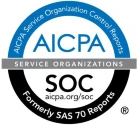7 Tips for Standardizing Customer-Centricity Across Global Operations

Managing an extensive multinational insurance portfolio comes with significant challenges. From navigating varying regulations and customer expectations to managing fragmented systems, insurers often face roadblocks that hinder growth and customer satisfaction. However, by focusing on standardization across systems and processes, insurers can overcome inefficiencies, modernize their core offerings, and deliver personalized customer experiences at scale.
As we explored in our latest whitepaper, here are 7 key tips to help insurers achieve growth through customer-centric standardization:
1. Simplify and Standardize Operations to Enhance Customer Experience
Fragmented systems and localized processes can create inconsistent customer outcomes. To maintain a high level of service quality across all regions, consolidating systems into a single standardized platform is essential. Doing so allows streamlined operations and ensures alignment with customer-centric goals.
With standardized operations, insurers can:
- Offer consistent services across geographies.
- Reduce bottlenecks caused by outdated or siloed systems.
- Focus more on personalized experiences rather than operational issues.
2. Use Data-Driven Insights to Understand and Meet Customer Needs
Centralization of data across regions enables better analytical capabilities. A standardized system provides a central repository of insights that equip insurers to proactively address customer needs and preferences.
With clean, accessible data, insurers can:
- Tailor services based on regional and individual customer demands.
- Identify patterns in customer behavior that fuel growth opportunities.
- Create seamless digital touchpoints across the customer lifecycle.
By focusing on data-informed customer strategies, insurers can demonstrate enhanced personalization while improving efficiency.
3. Leverage Hyper-Automation to Accelerate Service Delivery
Administrative-heavy tasks can create frustrating delays for customers. Hyper-automation, integrated within a standardised system infrastructure, accelerates processes and empowers s teams to refocus their efforts on enhancing the customer experience.
AI and automation tools improve:
- Customer onboarding journeys (with far quicker quote to bind times).
- Renewal notifications and follow-ups.
- Claims processing timelines.
These enhancements free teams to focus on high-value relationships and ensure customers receive timely services.
4. Enable Personalized Customer Interactions at Scale
Personalization continues to be a critical differentiator in retaining customers. A standardized system combined with advanced technology (like INSTANDA) gives insurers the ability to scale tailored interactions without compromising speed or accuracy.
By standardizing systems, insurers can:
- Deliver replicable personalized customer journeys across all markets.
- Use AI and machine learning to suggest customized product bundles or coverage enhancements.
- Offer proactive suggestions based on customers' historical behavior.
For example, cloud-based platforms (INSTANDA being an example) provide a 360-degree customer view, ensuring every touchpoint is rooted in understanding the individual, not just the policy.
5. Modernize Systems Incrementally but Strategically
Full-scale “rip and replace” transformations introduce significant risks and costs. Instead, insurers can opt for incremental modernization, transitioning new offerings to new systems while maintaining operational continuity through strategies like ringfencing.
Benefits of this approach include:
- Mitigating operational disruptions while introducing new capabilities.
- Gradually transitioning customers to improved systems without overwhelming change.
- Spreading transformation costs across manageable phases.
This approach allows insurers to modernize more intelligently while focusing on delivering an exceptional customer experience throughout the process.
6. Accelerate Speed to Market with Configurable Solutions
With evolving customer needs and competitive market conditions, insurers must be agile in launching new products. No-code platforms enable rapid product rollout through standardized full configurability.
Configurable platforms reduce development dependencies on engineering teams, empowering business teams to take ownership while expediting delivery.
This helps insurers:
- Reduce product development timelines from months to weeks.
- Seamlessly launch tailored offerings to specific demographics or regions.
- Scale successful products globally without re-engineering systems.
7. Foster a Culture of Agility and Customer-First Thinking
Beyond systems and technology, true transformation requires a cultural shift toward customer-centric design thinking. Insurers should involve teams across geographies and functions in shaping standards that primarily serve customer needs.
Steps to promote adaptability:
- Openly communicate the value of standardization to all employees and stakeholders.
- Provide training on the use of new systems and their benefits for enhancing customer outcomes (INSTANDA provides Foundational and Advanced technical training in a digital self-paced training environment.)
- Establish feedback loops from employees and customers to consistently improve processes.
A culture that places customers at the heart of processes ensures long-term success and sustained growth.
The Way Forward for Multinational Insurers
Standardization is not just about streamlining processes or cutting costs. It is a business-critical strategy for driving customer satisfaction, boosting efficiency, and enabling sustainable growth. By prioritizing customer-centric technology and practices, insurers can unlock their true potential while delivering exceptional experiences to their clients across the world.
To take the first steps toward crafting a scalable, standardized infrastructure suited to your customers’ needs, download our comprehensive guide today. Learn best practices, actionable strategies, and technologies that will future proof your operations.





